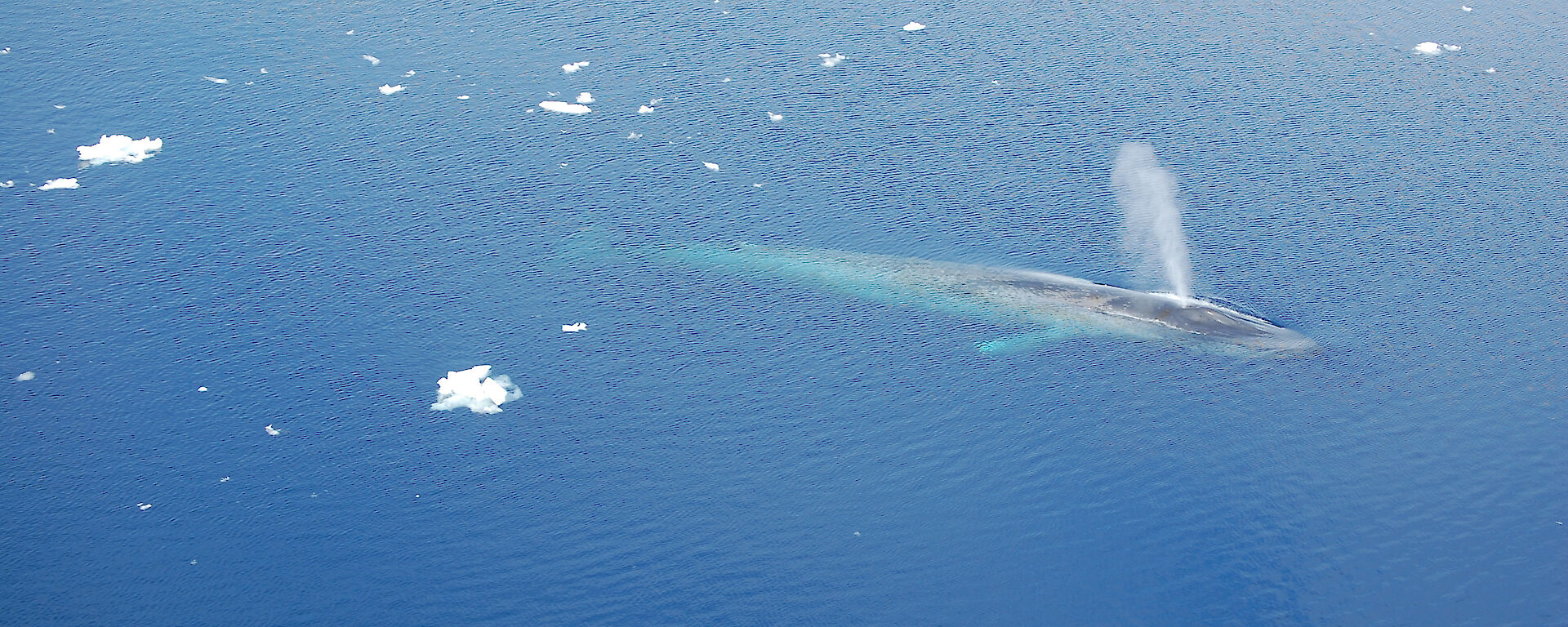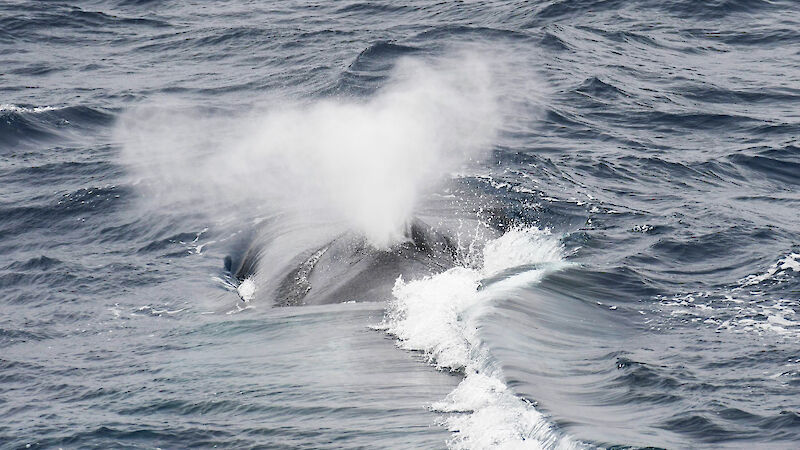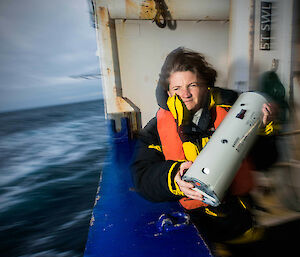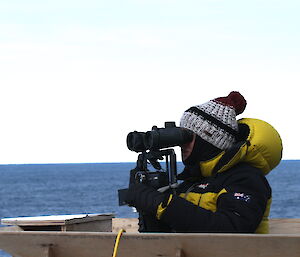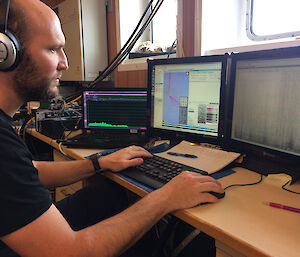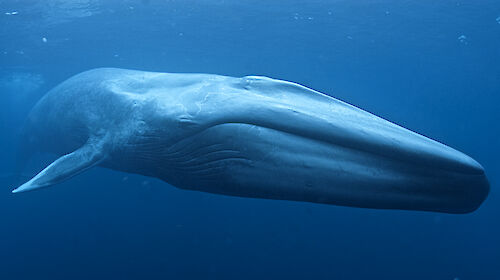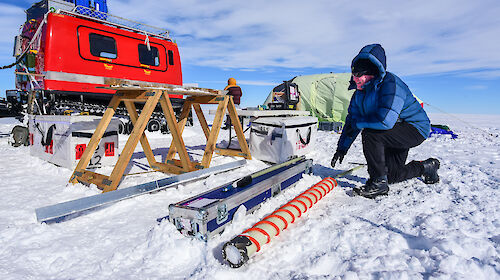The team, including Dr Susannah Calderan and Dr Brian Miller, surveyed locations off East Antarctica, between the Dumont D’Urville Sea and the Ross Sea, during three voyages in 2013, 2015 and 2019.
“The 2013 voyage was the first time we’d used passive acoustic instruments to find Antarctic blue whales by listening for their sounds,” Dr Miller said.
“The instruments allowed us to detect and track these rare and elusive animals from hundreds of kilometres away and get close enough to study them in fine detail.”
Once the team spotted a blue whale or a group of whales, their ship remained at a distance while they videoed the animals, typically for an hour at a time.
“We wanted to gain as much understanding as possible about the behaviour of the whales in their natural state, before we moved close enough to take photos for identification,” Dr Calderan said.
Extreme swimmers
The video tracking data allowed the team to measure the precise location of the whales each time they surfaced, how often they breathed (blow rates), how fast they swam and where they went.
“By measuring them very precisely we’re able to get an indication of whether animals are feeding or just moving through the area, and pick up patterns of movement and behaviour,” Dr Calderan said.
The whales’ dive behaviour comprised a sequence of short dives averaging 17.6 seconds each, followed by a long dive of, on average, three minutes. Blow rates showed the animals breathe about 60 times an hour.
The whales’ average swimming speeds varied between about 3.2 km/h and 6.6 km/h, with the fastest speed detected at almost 15 km/h. These were considerably faster than speeds measured in other blue whale populations in New Zealand, Sri Lank and California.
“This study confirms our picture of Antarctic blue whales as the most extreme among extreme animals,” Dr Miller said.
“They’re the largest animals on earth, the largest of the blue whale sub-species, and they travel faster and further than other blue whales.”
Automated detection
The video dataset collected on the three voyages is now being used to develop artificial intelligence (AI) to detect whales at sea during noisy operations, such as offshore oil and gas surveys and wind-farm construction.
The AI will reside within camera systems mounted on ships that can scan a 360 degree view of the ocean and detect blows from whales during the day and night.
“We’ve provided our expertise to guide industry in developing a focussed product that might reduce impacts on whales and that we can use for scientific observations,” Dr Miller said.
“We could put this new tech on our icebreaker, RSV Nuyina, and get whale data on every voyage.
“It won’t replace dedicated whale voyages, but if we can get short observations on every voyage we can look at trends in populations rather than just individuals.”
The research team said the study illustrates the benefits of applying technology in innovative ways, to learn more about an animal that has proved difficult to find and study using survey and sighting techniques that work well with other whales and species.
“When you try something different, it affords you new opportunities to do research,” Dr Miller said.
“This is important when you’re studying the most hunted whale during industrial whaling, and when there are still questions about its recovery and how to best protect them.”
The research is published in Frontiers in Marine Science.

